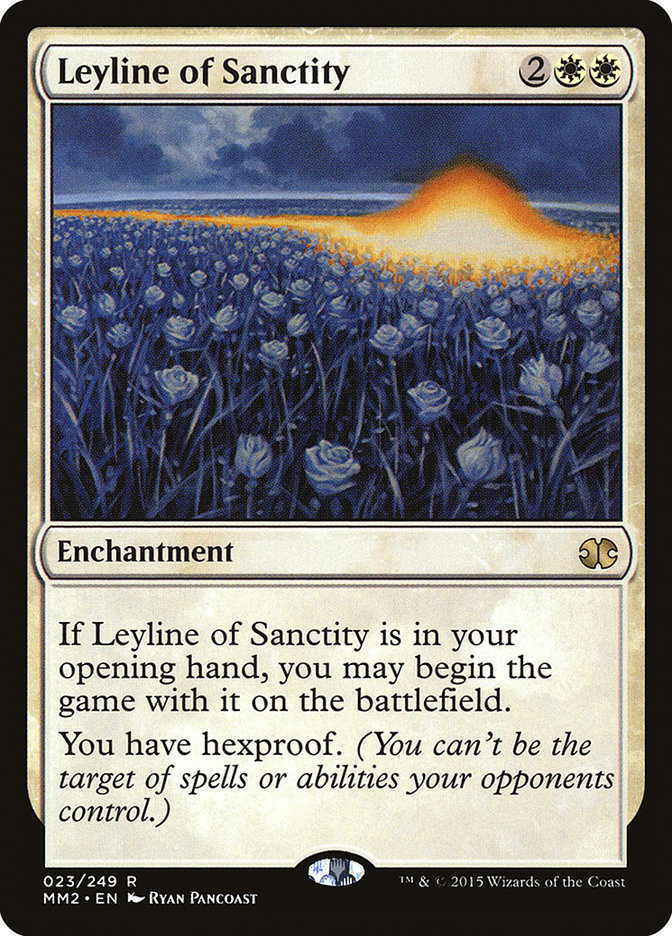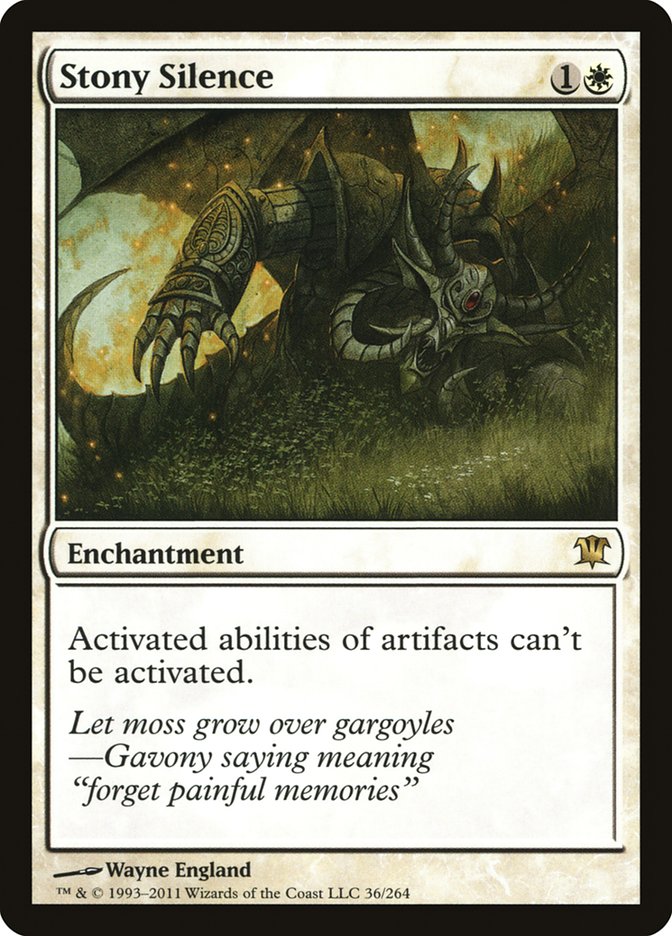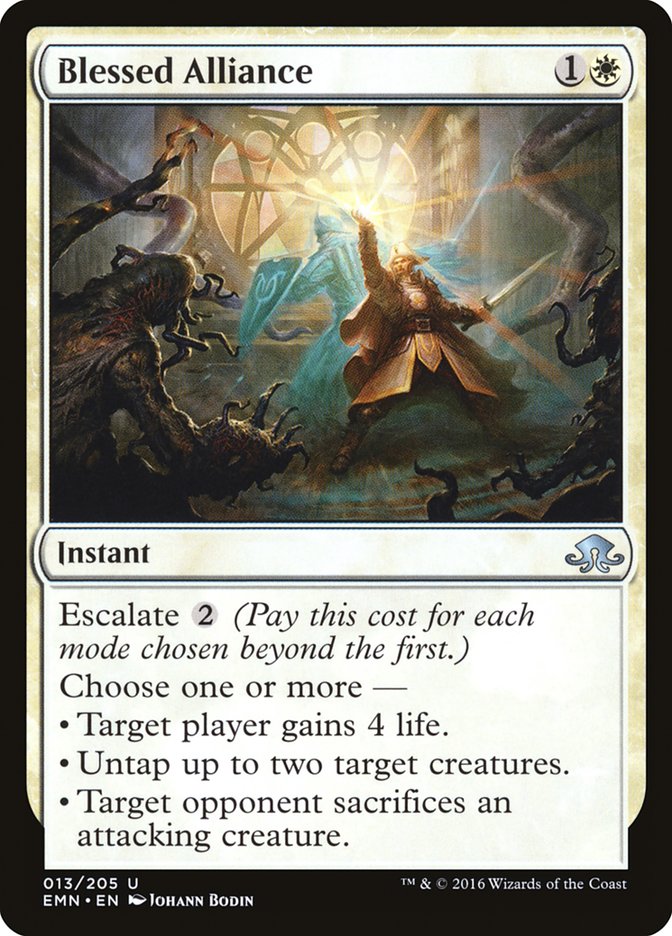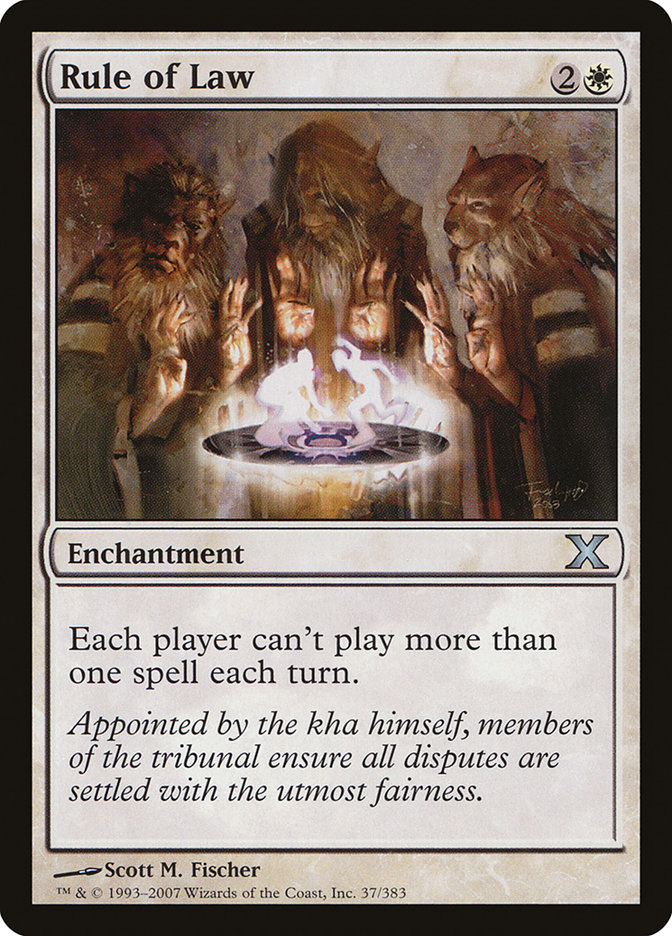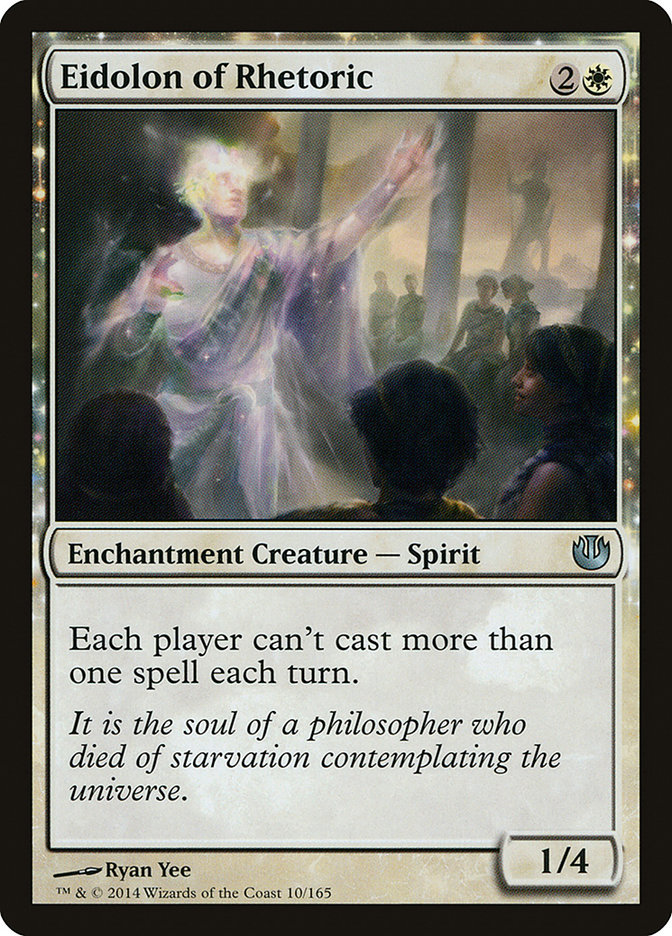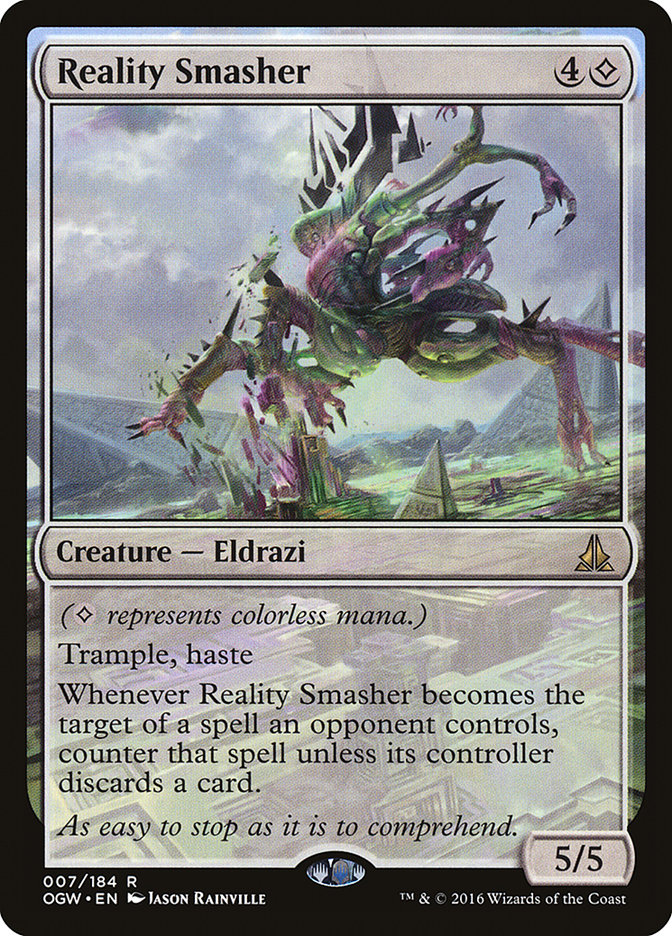Modern has long been a format of a million different decks, a factor that has been both celebrated and detested because of how difficult it is to metagame. You may choose to play a G/B Tron deck because you expect a lot of Abzan and Jund and sit next to those decks every round but get crushed by the random Infect players who didn’t get the memo that Gitaxian Probe was banned.
Some players love the variety. Some hate the volatility. Some just can’t handle the swings. But whether you love or hate it, there’s no denying Modern is an extremely popular format. As such, it doesn’t really matter how we feel about it; what matters is how we plan to attack it. New sets are released, decks rise and fall, cards are banned, but one thing always remains true:
There’s no format that emphasizes good sideboarding more than Modern.
Modern is a format full of powerful linear strategies, and without a lot of universal catchalls like Force of Will, it is very important to be able to answer your opponent’s strategy via your sideboard. On top of this, there are many devastating sideboard options. The only real issue is space. You need your sideboard cards to be as impactful as possible, and you need to have the right tools for the metagame of the week.
When you think of each color in Modern, you tend to think of their marquee cards: Lightning Bolt for Red, Snapcaster Mage and Serum Visions for Blue, Tarmogoyf and Noble Hierarch for Green, and so on. White is often a bit left out on this list, with Path to Exile as its big marquee card. But while Path to Exile isn’t necessarily a format-defining card like Tarmogoyf or Inquisition of Kozilek, white’s true strength lies in its array of extremely powerful sideboard cards.
White has an answer for almost anything imaginable in Modern and is a color you want to play almost primarily for the sideboard options it brings you. This can mean selecting your deck because it has the ability to play white sideboard cards, or altering your deck choice to include white in some way. This can be something like choosing Abzan over Jund or having white be your splash color in your green-based Tron deck.
No matter your path to getting white mana into your deck, your payoff is getting access to the very best sideboard cards in the format.
The inspiration for this article was largely based on how well-positioned Rest in Peace is right now.
As I warned about last week, last weekend’s breakout Modern deck was Death’s Shadow.
Creatures (13)
Planeswalkers (2)
Lands (18)
Spells (27)

With a Rest in Peace on the battlefield, this deck can essentially only win with naturally drawn copies of Death’s Shadow. Tarmogoyf is a 0/1, Traverse the Ulvenwald is a Lay of the Land, and Kolagahan’s Command loses its most important mode. Out of the sideboard, Lingering Souls becomes a one-shot deal, and Josh’s deck actually has zero ways to remove a Rest in Peace from the battlefield.
Just a cursory glance at the top-performing decks at Grand Prix Vancouver, Grand Prix Brisbane, and SCG Baltimore reveals a legion of decks that are very weak to Rest in Peace. Despite the Golgari Grave-Troll banning, Dredge saw a resurgence in Brisbane, where there was a Living End deck in the Top 8 as well, and even the fair Abzan and Jund decks are weak to the card.
Creatures (12)
Planeswalkers (5)
Lands (24)
Spells (19)

While it does have a couple of copies of Abrupt Decay, can you imagine a deck like this ever winning with a Rest in Peace on the battlefield? They end up with a couple of Grizzly Bears, Midnight Hauntings, and six-mana 4/5s. It’s not as backbreaking as it is against something like Dredge, but even many fair decks are significantly impeded by Rest in Peace.
If you can play Rest in Peace in your sideboard, make it happen.
Another card whose stock went up last weekend, Leyline of Sanctity starts to look very good with all the copies of Thoughtseize and Inquisition of Kozilek currently going around. Fatal Push has reinvigorated many of the fair black decks, and those decks always look to targeted discard as their disruption of choice.
Leyline of Sanctity is not a card that all decks are going to want against targeted discard decks, but is a fantastic tool for any combo deck. The black decks don’t interact very well outside of creature removal and discard, so if you are playing Ad Nauseam, Storm, or some other combo deck, it can be a valuable tool.
Lands (18)
Spells (42)

With Lantern Control winning the Grand Prix in Brisbane, Leyline of Sanctity is also a great tool there as well. Not only does it stop the many discard spells, it also nullifies Codex Shredder. One of the most frustrating things about playing against Lantern Control is drawing your sideboard card in your opening hand but being on the draw and seeing it hit the graveyard via a Thoughtseize on your opponent’s turn 1. Leyline of Sanctity gets around this problem and is a card that Lantern Control decks will often have problems removing.
Aside from its applications against targeted discard, Leyline of Sanctity is also a great tool against Valakut, the Molten Pinnacle decks and Burn decks. With Valakut and Burn being fringe decks at the moment, Leyline of Sanctity had fallen out of favor, but its added utility against discard-based decks brings it right back into the fray.
White sure loves hateful enchantments, doesn’t it?
Not much has changed about Stony Silence, as it’s still a great answer to Affinity, Lantern Control, and Tron decks. Each deck is somewhat on the fringes of the format, but having a powerful answer to multiple fringe decks is a key component to a Modern sideboard. People will play what they play, and being prepared is essential.
Gideon, Ally of Zendikar has been the terror of Standard for far too long, but it is also slowly starting to be adopted in Modern as well.
While a bit too fair to be a great maindeck card, Gideon, Ally of Zendikar is a stellar sideboard trump card for fair matchups. Being four mana and immune to creature removal makes it extremely difficult to deal with for the various Abzan and Jund decks, which rely heavily on Inquisition of Kozilek, Abrupt Decay, and removal for interaction. Having a singular threat which can end the game is a fantastic follow-up to a flurry of discard spells, and as long as you can provide Gideon a path, he will win your fair matchups fairly quickly.
Decks with access to black mana will often turn to Lingering Souls in this slot, but if you are maxed out there or looking for more ammo in your fair matchups, Gideon, Ally of Zendikar is a great choice.
One of the cards that held Infect and the old Death’s Shadow decks in check, Blessed Alliance is a fantastic Swiss Army knife-style sideboard card. Obviously fantastic against Burn, Blessed Alliance is also quite good against the new breed of Death’s Shadow decks. Blessed Alliance has a hidden, often unused mode, that has become startlingly relevent: “If target player is at nine or more life, kill all creatures named Death’s Shadow controlled by that player.”
That’s right, Blessed Alliance does not just read “Gain 4 life” but rather has target player gain the life. While not a mode one would ever really want to use, Death’s Shadow makes for some weird games of Magic. At face value, Blessed Alliance is also just a great card against the Death’s Shadow deck anyway. They often only have one big attacker, and gaining back life can be valuable.
When it comes to flexible sideboard removal options in Modern, Blessed Alliance is right at the top. Aside from common applications, it also is a great corner-case card against anyone who decides to bring Hexproof or Infect as well. This sort of deck coverage is the hallmark of a great Modern sideboard card.
The manner of delivery is dependent on what your deck is trying to do, but the result is mostly the same. Rule of Law is a popular sideboard card that hasn’t seen the light of day for a while, but it is a card that needs to be revisited.
Storm decks have been given a shot in the arm with the printing of Baral, Chief of Complience, and Rule of Law is perhaps the most powerful card you can bring to the table against a Storm deck. Rule of Law is also a great safety valve against some of the format’s newer combo decks as well, as it completely shuts down any sort of Kari Zev’s Expertise into fuse cards or cards without mana costs. As such, it also provides an additional layer of protection against fringe cascade decks like Living End and Restore Balance as well as Puresteel Paladin combo decks.
You Still Need to Win the Game!
The most important thing to note about these sideboard cards is that, aside from the Gideon, they do not win the game by themselves. You can’t expect to just cast a Rest in Peace against Dredge and have your opponent concede on the spot. It is going to put a ball and chain on their leg, but it’s not going to stop them from trying to fight back. If you give your opponent too much time, they will just cast their Prized Amalgams or what-have-you and find another way to win.
As such, it is very important not to over sideboard beyond your deck’s primary plan. Your sideboard cards should be wrenches you throw into your opponent’s plan, not a plan in and of themselves. Even the actual W/R Prison deck isn’t fully looking to lock its opponent out of the game, but merely to put them off-balance for long enough to win with its planeswalkers.
Creatures (5)
Planeswalkers (10)
Lands (24)
Spells (21)

Tetsu Kawaguchi’s W/R Prison deck is a perfect example of how to attack a format with your sideboard.
The W/R Prison maindeck is probably one of the worst maindecks in the format. You’ve got a number of cards that are dead in certain matchups and are very reliant on Chalice of the Void and Blood Moon being effective against your opponent so you can get your planeswalkers online.
However, W/R Prison also has perhaps the best sideboard in the entire format. Almost every card on our list today is in it! In almost any matchup, the W/R Prison deck will be able to cut the dead cards and bring in a bevy of brutal hate cards, furthering its plan of “play a card that slows my opponent’s strategy down and then resolve and win with a planeswalker.” Because the deck doesn’t use its graveyard, play any artifacts, play any creatures, or play any spells that cost one mana, and it has room for a bunch of basic lands, it can do this.
And that’s the rub— it’s often hard to find a deck that can actually play the hate cards without damaging its core strategy. You can’t sideboard Rest in Peace against Dredge in your Abzan Company deck because it turns off your combo. As such, these sorts of medium decks like W/R Prison end up being much better than the sum of their maindeck because of how good their sideboard is. Another great example of this is Bant Eldrazi.
Creatures (25)
- 1 Birds of Paradise
- 4 Noble Hierarch
- 4 Drowner of Hope
- 4 Eldrazi Skyspawner
- 4 Eldrazi Displacer
- 4 Reality Smasher
- 4 Thought-Knot Seer
Lands (23)
Spells (12)

Bant Eldrazi is definitely a fickle deck, with highly polarizing draws relative to how often it draws Eldrazi Temple. But what it gives up in consistency or maindeck power it more than makes up in the power of its sideboard. Like WR Prison, Bant Eldrazi has no reservations about shutting down graveyards or artifacts, which opens it up to some of the most powerful sideboard options in the format.
There’s also something to be said for going turn 2 Rest in Peace, turn 3 Thought-Knot Seer, turn 4 Reality Smasher and just killing your opponent in two turns. The Eldrazi cards do their job well enough, providing a fast clock that can also interact in other ways in more drawn-out games, but make no mistake— the draw to playing Bant Eldrazi is the sideboard.
White Sideboard Cards Are Forever
With the recent bannings and release of Aether Revolt, Modern has experienced a fairly significant shift. However, while the cards and decks are always evolving, the overarching strategies often stay the same. There will always be graveyard-based decks, artifact decks, and spell-based combo decks, and as such there will always been great white sideboard cards to punish them.
Sometimes it is better to find the best way that can use these sideboard cards to attack the new decks, rather than just picking up the new decks for yourself.






